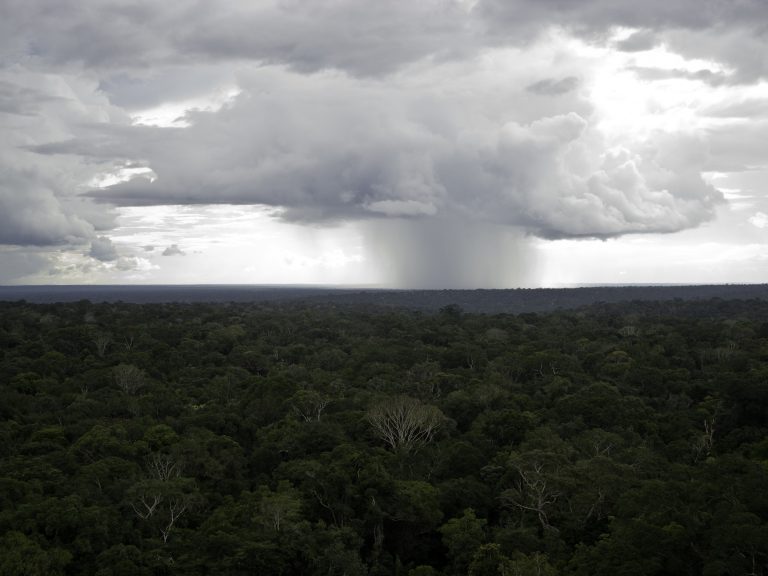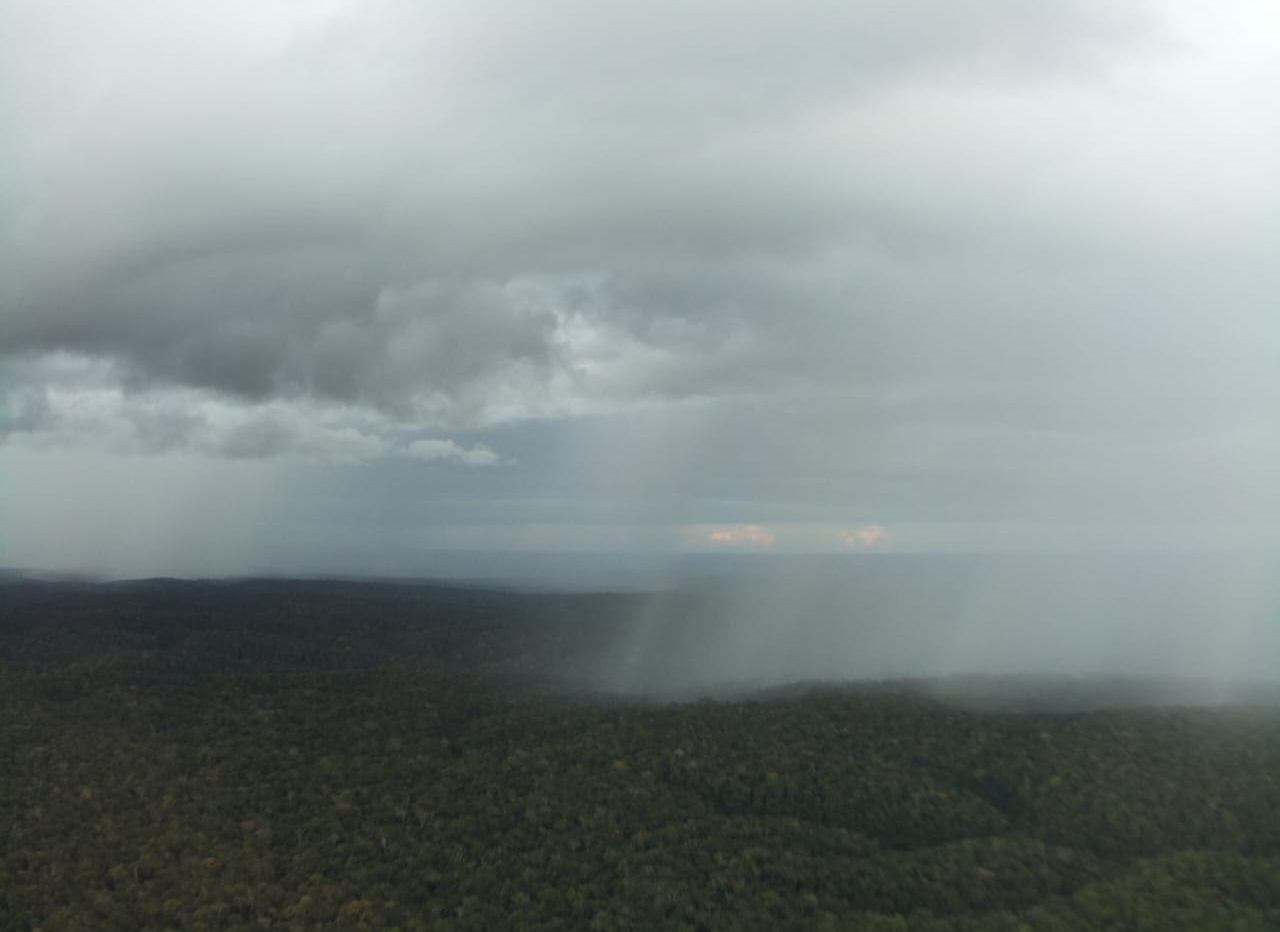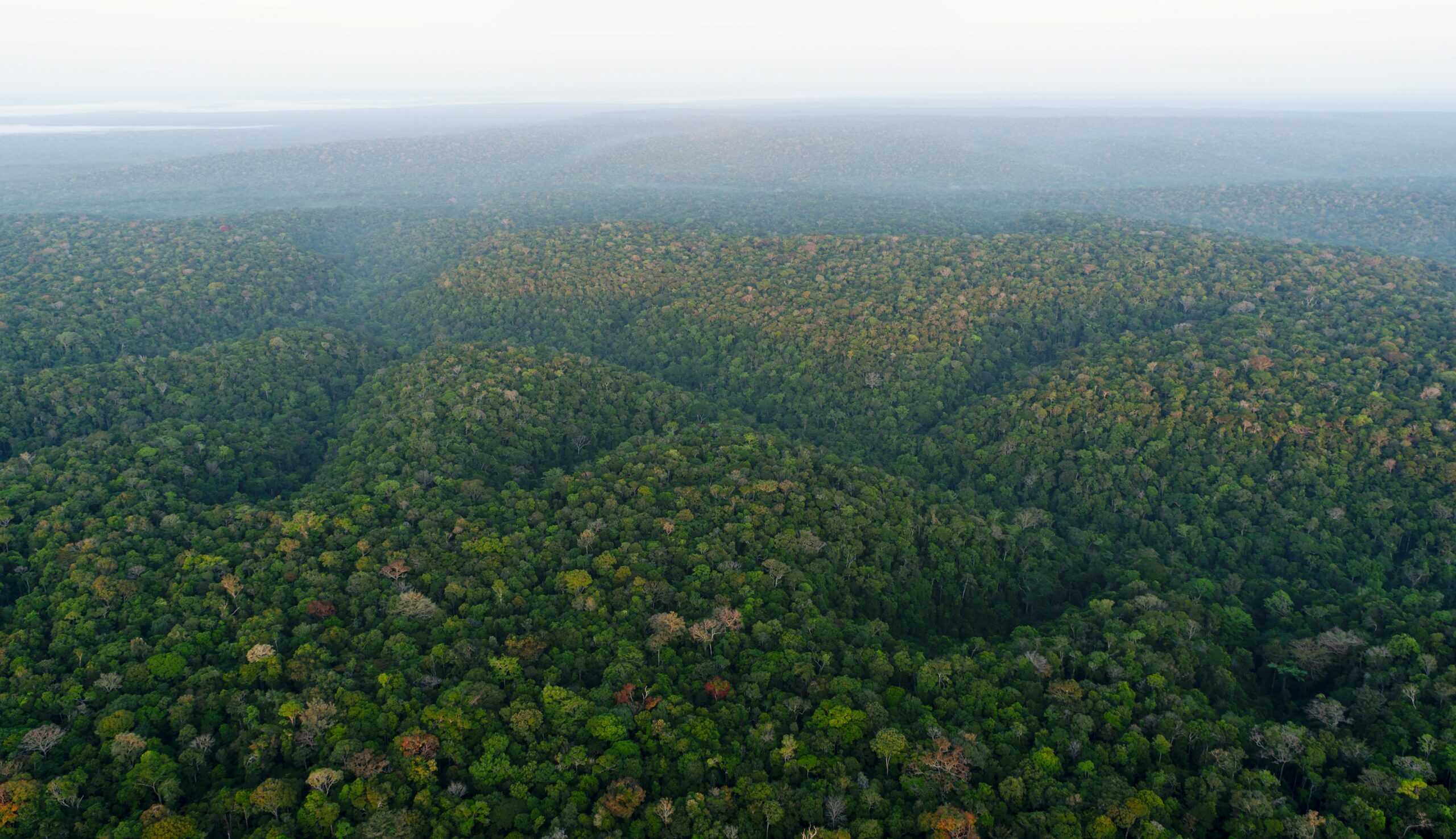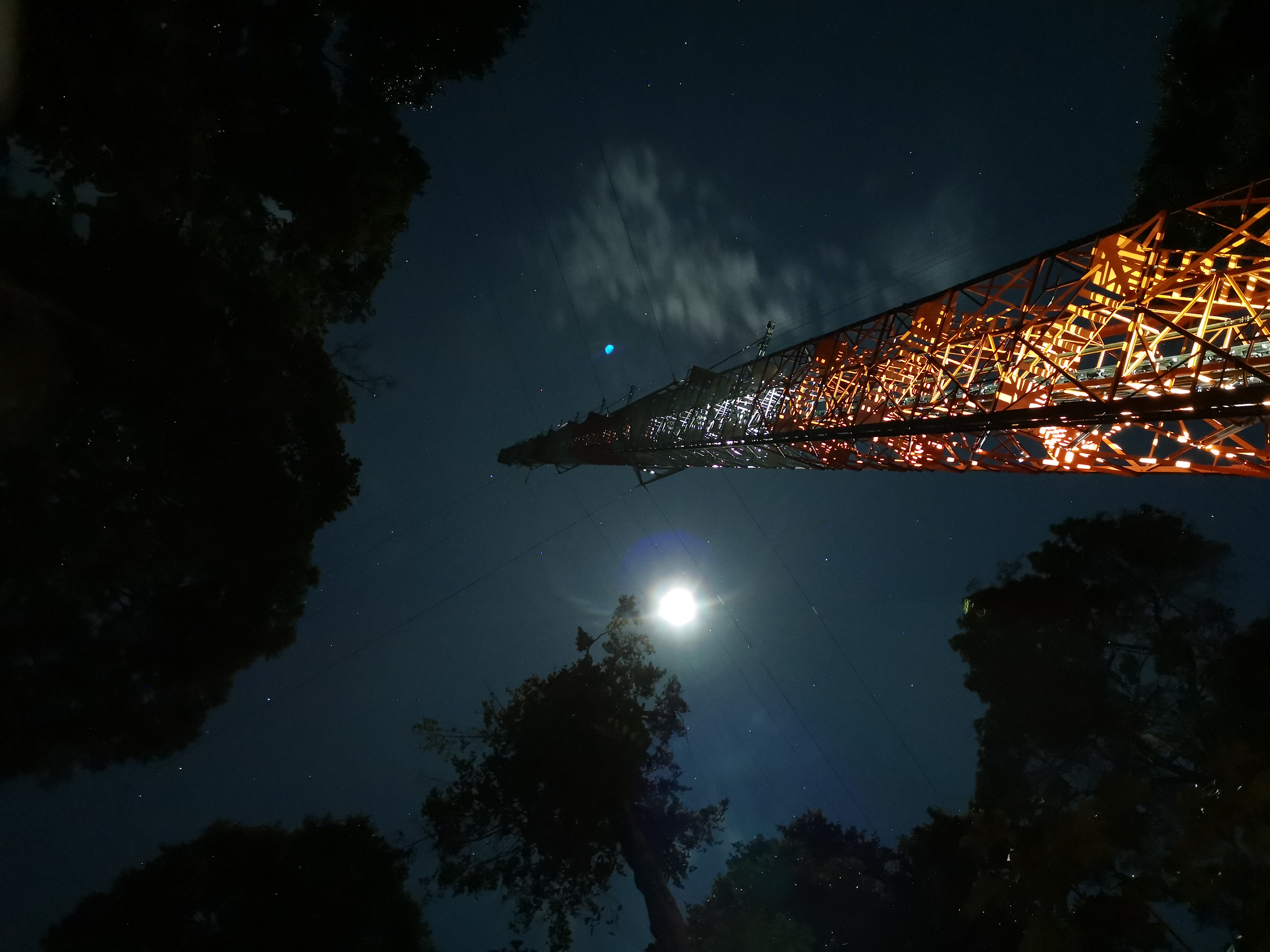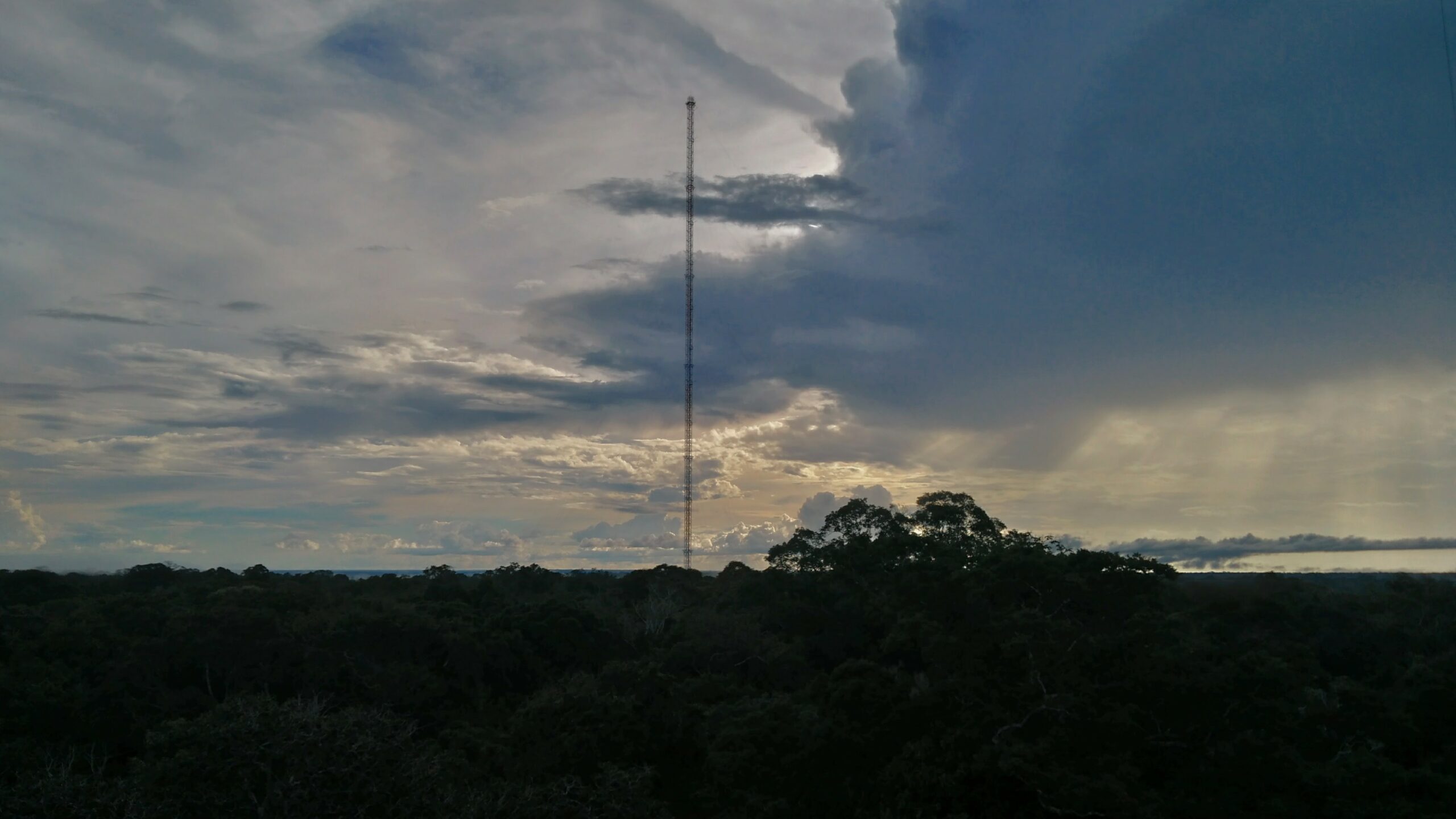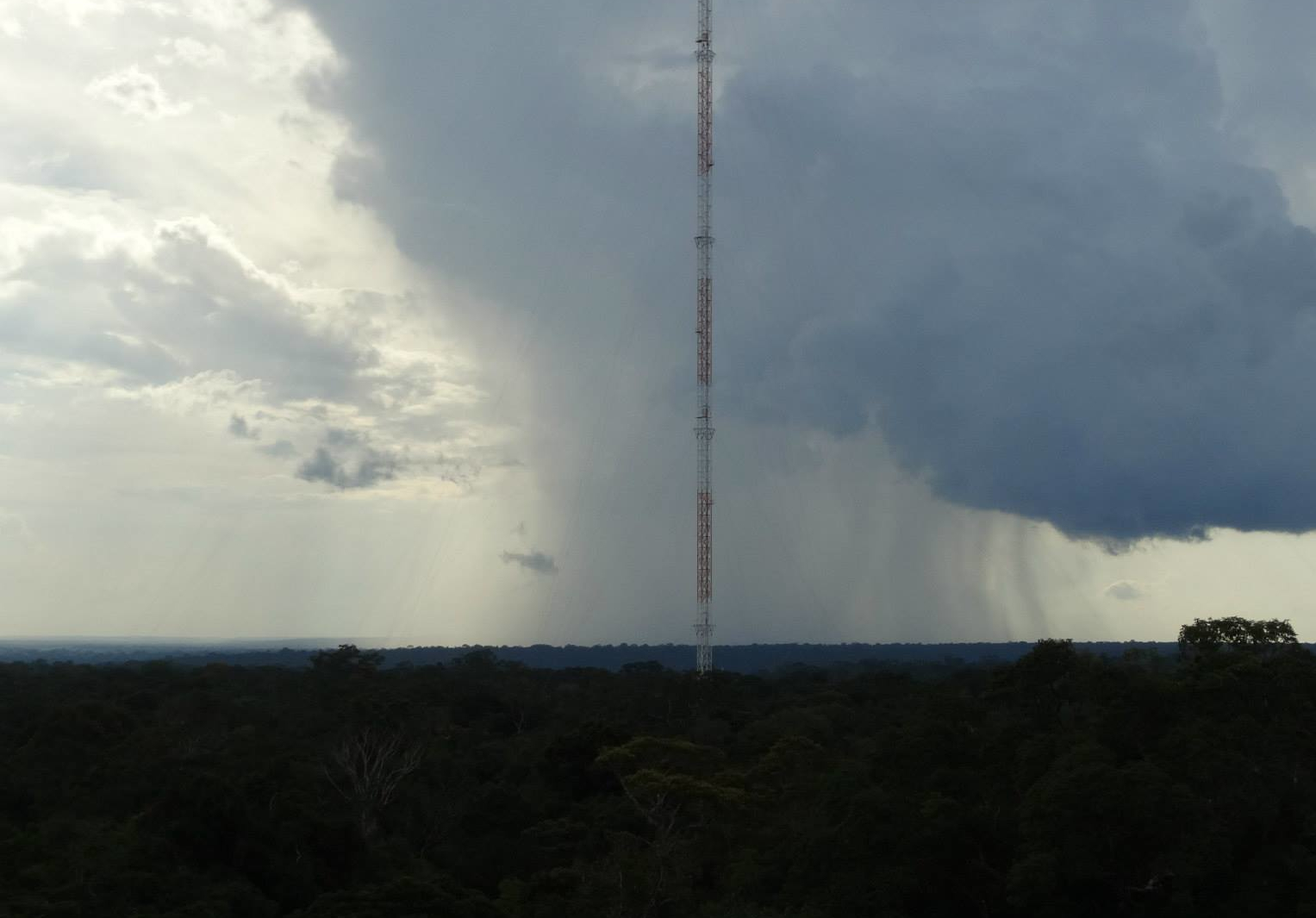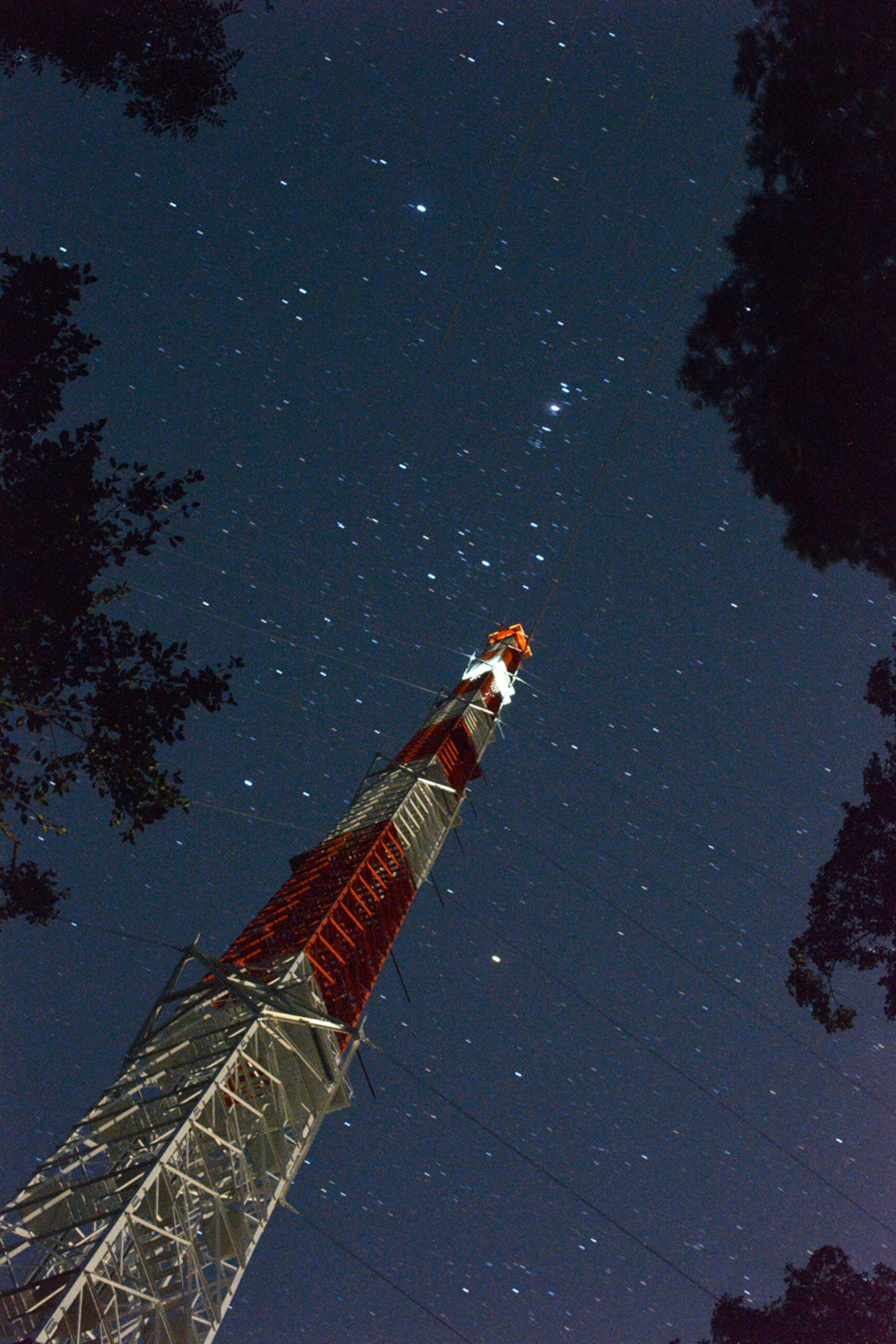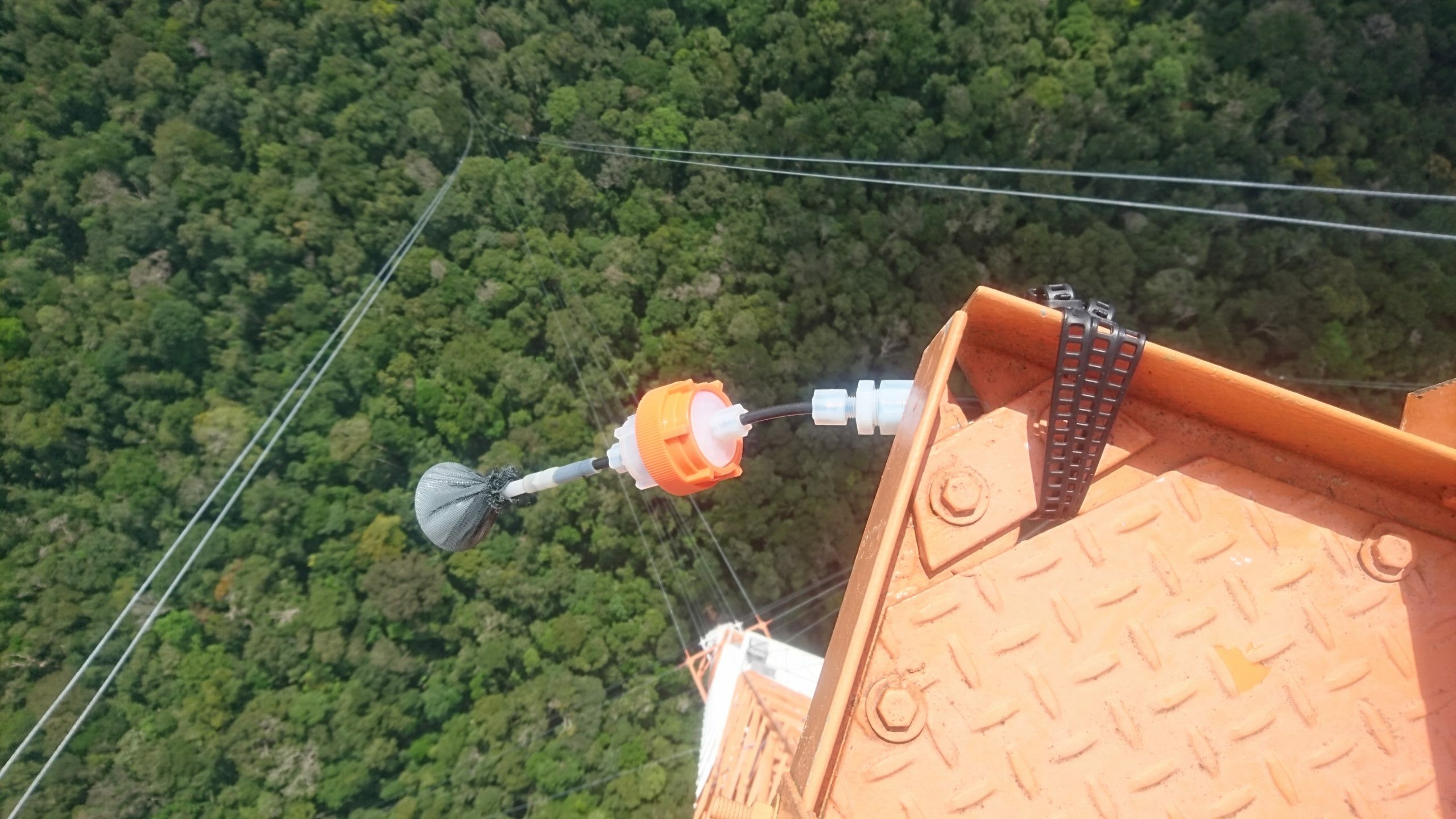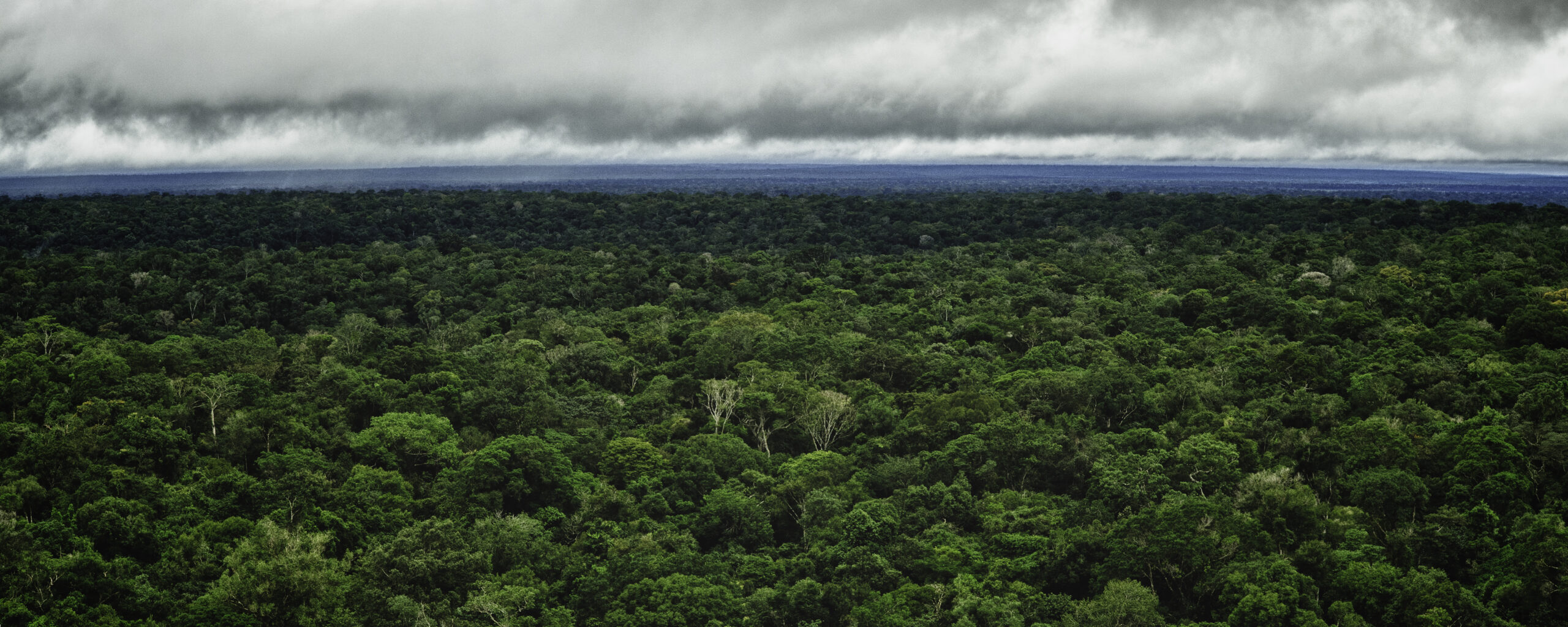Convective storms often occur the tropics and have the potential to disturb the lower part of the atmosphere. They might even improve the venting of trace gases out of the forest canopy into the atmosphere above. To better understand these processes, Maurício Oliveira and co-authors used the infrastructure at ATTO to study storm outflows during nighttime. They published the results in a new paper in the Open Access Journal Atmospheric Chemistry and Physics.
Why does it rain so frequently in the tropics? The reason is a mixture of many factors, but most importantly it’s very warm and very humid most of the time. Over the course of the day, it gets hotter and warm air rises. Further up in the atmosphere it slowly cools down. Thus water vapor condenses into cloud droplets and subsequently ice particles and convective storms form. A convective storm is per definition one that forms because of latent heat, i.e. the process just described. These storms often produce rain and strong winds. Once the winds hit the ground at high speeds, they spread out into all directions and may continue to flow over considerable distances. That’s why we sometimes experience strong winds (called outflow) before thunderstorms reach us.
But convective storms are associated with another important process that we can’t experience ourselves. These strong storms disturb the lower part of the atmosphere. This may affect the exchange of chemicals between the forest and the atmosphere. For example, the outflow winds associated with convective storms might improve the venting of trace gases out of the forest canopy into the atmosphere above. This is why our team wants to learn more details about convective storms in tropical forests.
Maurício Oliveira and co-authors used the infrastructure at ATTO to study storm outflows during nighttime, when stable atmospheric layers are usually established. They measured at several heights on our 80-meter tower during several separate storm events. They found that the storm events all had well-defined gust fronts. When they passed over the ATTO site, temperatures quickly dropped while wind speeds picked up. In addition, the sensible heat flux reversed. Before the storm arrived, warmer air was heating the colder ground below (=negative heat flux) as is typical at night. When the gust front brought cooler air to the site, the ground became warmer in comparison and was now transmitting heat back into the air (=positive heat flux) in a short, abrupt burst. Such a positive flux is typical for daytime, when solar radiation warms up the ground. However, it does not usually occur at night, especially in such a transient fashion. Our team observed this effect both above and below the canopy, although it was more pronounced above the treetops. Finally, they noticed that the air from the outflow was very turbulent. It was also drier, despite some rain occurring in the center of the storm. This led to an increase in the latent heat flux, meaning an increase in heat loss due to evaporation and transpiration.
Such land-atmosphere exchanges can have a significant impact on weather-simulations and predictions. And until we know more about them, they might be misrepresented in climate models. With this study, our team made a step toward bettering understanding the atmospheric dynamics within the storms and their interaction with the forest. Most importantly they learned that convective storms can create significant and abrupt changes in atmospheric conditions. To detect them was only possible with the high-frequency, multi-level measurements.
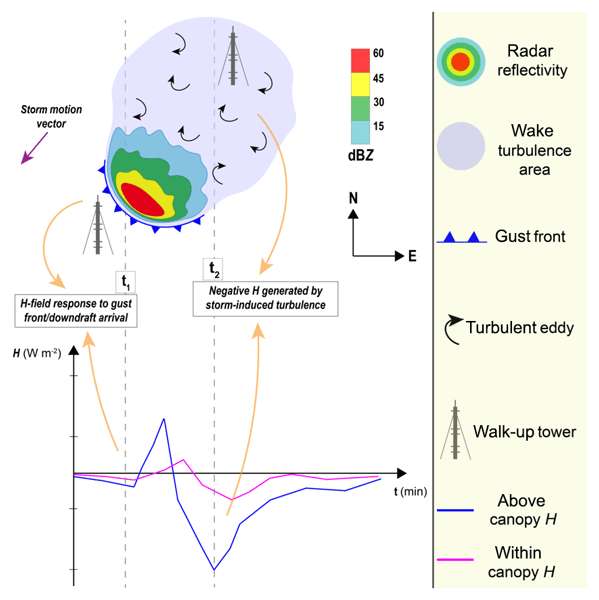
The study titled “Planetary boundary layer evolution over the Amazon rainforest in episodes of deep moist convection at the Amazon Tall Tower Observatory” is available Open Access in Atmos. Chem. Phys., Issue 20.
Similar articles
Direct measurements of OH radicals are rare and difficult to achieve. However, since they react with BVOCs, Ringsdorf et al. inferred them from isoprene measurements at ATTO. To do so, they applied a technique called ‘Dynamical Time Warping’ from the field of speech recognition. Akima Ringsdorf et al. published the study “Inferring the diurnal variability of OH radical concentrations over the Amazon from BVOC measurements” Open Access in Nature Scientific Reports.
In a new study, Anne Mendonça, Cléo Quaresma, Daniel Marra and their co-authors analyzed different turbulence regimes at the ZF2 site as part of the ATTO-INVENTA project. They also investigated how turbulence is connected to the occurrence of downdrafts and extreme wind gusts, that might lead to tree mortality.
In a new study, Luca Mortarini and his colleagues introduce a novel approach to the study of the roughness sublayer, using a cospectral budget model. Its originality lies in not considering the mixing layer analogy to parameterize the turbulence statistics. In addition, it relates them to the different scales of the wind velocity spectrum without making any assumption on the property of the flow.
Eiky Moraes, Cléo Dias-Júnior and their colleagues wanted to find out if the local topography at the ATTO influenced the atmospheric movements. In particular, they were interested in the effect that topography has on the formation of gravity waves. Comparing two simulations, one with and one without topography, revealed some important differences in the dynamics and chemistry of the atmosphere.
Only when the air inside of the forest canopy mixes with the air above can there be exchange. The physical movement of the air, its turbulence, determine how well these two layers of air, the one inside the forest canopy and the one above, mix. Daniela Cava, Luca Mortarini, Cleo Quaresma and their colleagues set out to address some of these questions with two new studies that they conducted at ATTO. They wanted to define the different regimes of atmospheric turbulence or stability (Part 1) and describe the spatial and temporal scales of turbulent structures (Part 2).
In a new study, Marco A. Franco and his colleagues analyzed when and under what conditions aerosols grow to a size relevant for cloud formation. Such growth events are relatively rare in the Amazon rainforest and follow and pronounced diurnal and seasonal cycles. The majority take place during the daytime, and during the wet season. But the team also discovered a few remarkable exceptions.
It is long known that aerosols, directly and indirectly, affect clouds and precipitation. But very few studies have focused on the opposite: the question of how clouds modify aerosol properties. Therefore, Luiz Machado and his colleagues looked into this process at ATTO. Specifically, they studied how weather events influenced the size distribution of aerosol particles.
Polari Corrêa and his co-authors analyzed the atmospheric dynamics in and above the forest canopy during one particular night at ATTO. Those conditions changed throughout the night. Turbulence was followed by the formation of a gravity wave and a low-level jet. It was likely formed due to the breeze from the Uatumã River and the hilly terrain. The study highlights the complex dynamics and mechanisms in the atmosphere above a dense forest.
Biogenic volatile organic compounds remove OH from the atmosphere through chemical reactions, which affects processes such as cloud formation. In a new study, Pfannerstill et al. reveal the important contributions of previously not-considered BVOCs species and underestimated OVOCs to the total OH reactivity.
Although located in the tropics, the Amazon sporadically experiences incursions of cold waves called friagem events. They significantly impact the weather patterns during the time they occur, causing for example a temperature drop and increased cloudiness. Guilherme Camarinha-Neto and his colleagues now found that they also affect atmospheric chemistry.


